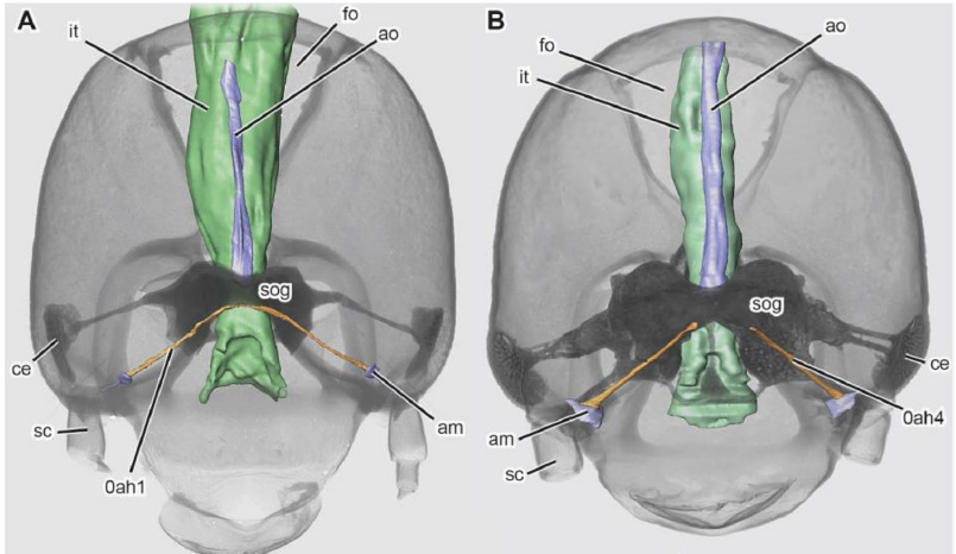Wipfler0 B, Bradler S, Büsse S, Hammel J, Müller BR & Pass G. 2021
Zoomorphology 140, 331–340 (2021).
doi.org/10.1007/s00435-021-00526-4. Link. Published online 1 June 2021
Abstract
The morphology of the antennal hearts in the head of Phasmatodea and Embioptera was investigated with particular reference to phylogenetically relevant key taxa. The antennal circulatory organs of all examined species have the same basic construction: they consist of antennal vessels that are connected to ampullae located in the head near the antenna base. The ampullae are pulsatile due to associated muscles, but the points of attachment differ between the species studied. All examined Phasmatodea species have a Musculus (M.) interampullaris which extends between the two ampullae plus a M. ampulloaorticus that runs from the ampullae to the anterior end of the aorta; upon contraction, all these muscles dilate the lumina of both ampullae at the same time. In Embioptera, only the australembiid Metoligotoma has an M. interampullaris. All other studied webspinners instead have a M. ampullofrontalis which extends between the ampullae and the frontal region of the head capsule; these species do not have M. ampulloaorticus. Outgroup comparison indicates that an antennal heart with a M. interampullaris is the plesiomorphic character state among Embioptera and the likely ground pattern of the taxon Eukinolabia. Antennal hearts with a M. ampullofrontalis represent a derived condition that occurs among insects only in some embiopterans. These findings help to further clarify the controversially discussed internal phylogeny of webspinners by supporting the view that Australembiidae are the sister group of the remaining Embioptera.

